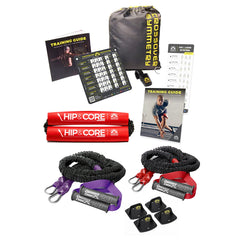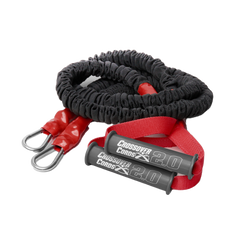If you’re over the age of 30, you probably don’t feel like you bounce back like you used to.
You likely feel that all-nighters, all-day sports camps, and jumping off playground equipment is no longer for you.
Rest assured that you’re not alone!
Some of the declines are because workout frequency and intensity tend to decrease with age.
Yet there is still far more than keeping up with your workout routine. Considering professional athletes, in the 2017 season, only 5 NFL players were over 40. Four Kickers/Punters and one Quarterback—the GOAT, Tom Brady.
Here are only a few of the reasons you feel old…
(and get to the end, I’ll cover some ways to fight off father time.)
What Happens that Makes You Feel Old
1. Wear and Tear
Many attribute their aging body to a lifetime of wear and tear. People talk about their bodies like an old car, describing a lifetime of beatdown and the fun they had along with it.
There is scientific evidence that says this is true. A review posted on Instagram of the research by a physio named Adam Meakins sums it up pretty well.
Based on imaging of pain-free people, it showed:
- 39% over the age of 50 had rotator cuff tendinopathy
- 72% between ages 40 and 65 had shoulder labrum tears
- 80% between 40-65 had spinal disk degeneration
- 69% ages 15- 66 had hip labrum tears
(Again…Notice how this review was of pain-free people!)

Ref: https://www.instagram.com/p/BgjxxUCF8Fv/
So, unfortunately, the body does break down in ways that it can’t repair. To combat this, the body uses the strength and stability of supporting muscles to work around the issue.
This support structure can get challenged over time by either the progression of the injury or a sudden bump in physical demand, like jumping full-on into a new workout program, which pushes the body past what it was prepared to cover.
This can reveal underlying injuries, leading the brain to signal pain messages.
2. Decreased Growth Hormone Production
Growth hormone stimulates the body to build new tissue for growth and recovery. It is well documented that growth hormone levels decrease with age—beginning in the 30s and leveling out around age 60.
(There are several other hormones and chemical messengers that drop off, but here we will highlight this important one.)
It’s a life stage called somatopause. It leads to a decrease in muscle mass and energy and an increase in body fat (ref).
All of which don’t make you feel like you still “got it.”
The idea of supplementing growth hormone as an anti-aging drug took off in the 90s, with studies showing growth hormone treatments increased lean body mass and dropped fat
But don’t get too excited, the changes weren’t that great.
Not to mention, the side effects such as joint pain, swelling, and a greater risk of diseases like diabetes and cancer make it a bad anti-aging drug. And it’s also extremely expensive.
3. Changes to Cartilage
The joints are protected with padding called cartilage. It acts as a shock absorber and keeps the bones from grinding together.
Cartilage loss begins in the first stages of osteoarthritis, a disease that affects half of the population over the age of 50 (ref).
It’s often attributed to being a natural part of the wear and tear that comes with aging. Evidence supports the natural breakdown of cartilage, just like the tread wears down on your tires with use (ref).
However, there is more to joint pain than the natural breakdown. The makeup of cartilage changes with age as well. Studies show that older cartilage has less water content and becomes stiffer and more brittle.
As osteoarthritis progresses, the joints become inflamed, which adds to joint stiffness and further breakdown.
This is a vicious cycle of joint changes, which limits movement, which adds to further joint changes, and adds a lot to the lifetime of wear and tear that has occurred.
4. Decreases in Flexibility, Agility, and Balance
There is a well-documented decrease in strength and speed with age. This is most noticeable in athletic populations who are in tune with their performance, but among every aging adult, the feeling of less athleticism is common (ref).
Again, changes in physical activity contribute to this decline. Jumping fences, climbing trees, and balancing on walls don’t fit into many adult lifestyles. But again, there are physiological changes that occur with age as well.
Much of this decline comes from a decrease in flexibility. Like cartilage, tendons (which attach muscle to bone) lose water content with age. This limits flexibility due to a decrease in their ability to stretch.
Strength and stability are major limiters of mobility as well. Often the feeling of tightness is because the brain doesn’t feel strong in that position. For example, if the brain doesn’t feel strong at the bottom of the squat, it will protect itself with stiffness.
Also, if you consider athletic performance, there is much more to moving fast and changing direction than muscle action. The brain has to take in all of the surrounding information—the sights and sounds, where you are, where you want to go, obstacles in the way, etc.— a process that information and then communicate that to the muscles.
With aging, all of that processing slows down. So, in addition to the decline of physical capability, there is a decline in the sensory processing that facilitates balance, agility, and coordination (ref).
The Fountain of Youth
Hopefully, this talk about getting old hasn’t got you down!
There are many stories of people who cleaned up their diet and got on a workout program who are now…
“In the best shape of their life!”
Here is some advice on how to slow the aging process:
1. Get a Good Nights Sleep
This is when growth hormone production is the highest, and your body is in recovery mode.
Along with this, scale back on alcohol consumption. Studies show that it decreases nighttime growth hormone production as well.
2. Fix your Nutrition
A good friend of mine once told me,
“If you want a lazy body, be lazy with your food”
This is very true!
Carrying around excess weight adds significant wear and tear to aging joints. Therefore, maintaining a healthy weight is one of the most important things you can do for an aging body. This is largely tied to nutrition through managing calorie intake.
In addition to that, a healthy diet helps to decrease levels of systemic inflammation. This inflammation adds to joint pain, decreases energy levels, and fuels the progression of most chronic diseases.
3. Build a Movement Foundation
Maintaining physical activity levels through exercise is an important part of keeping your body young. However, it needs to extend beyond just building muscular strength and endurance.
The problem with most training plans is they stop seeking to build whole-body athleticism. Even many “functional training” programs only train in certain motions.
The foundation for developing physical fitness should begin with developing a Blueprint for Movement. This means addressing joint stability, mobility, and control before seeking to move as much weight as possible.
Not only does this help to combat much of the decline seen with aging, but it also builds a body more capable of performance, which we will learn next is an important part of being ready for peak performance.
4. Challenge Your Body
The purpose behind exercise is to create a stimulus that will force the body to adapt, so it’s ready when it happens again. Therefore, your exercise program must be challenging enough to stimulate an adaptation.
Start by lifting heavier weights. Weights that are challenging for 3-5 reps are often neglected in workout programs.
Then add some speed to your training program. Never moving fast is the best way to get slow.
All of this points to the fact that if you want to be an athlete, you must train like an athlete. Getting out of breath and lifting heavy things is the best way to fight the aging process, but that does come with an increase in workload and intensity.
If this is done without first establishing the movement foundation discussed in the previous point, if it’s done recklessly without the proper progressions or jumped into without any focus on technique, an injury will often occur.
5. Learn New Sports and Activities
The motivational speaker Les Brown once said,
“You are never too old to set another goal or to dream a new dream.”
One of the primary reasons we grow old is that we allow ourselves to grow old.
Learning new things does become harder with age, but that’s not an excuse to avoid new things.
Continue to challenge yourself with new and different physical activities. This will help keep your body young and ready for whatever you throw at it.
 Shoulder Packages
Shoulder Packages
 Hip & Core Package
Hip & Core Package
 Bundles
Bundles
 Accessories
Accessories



















